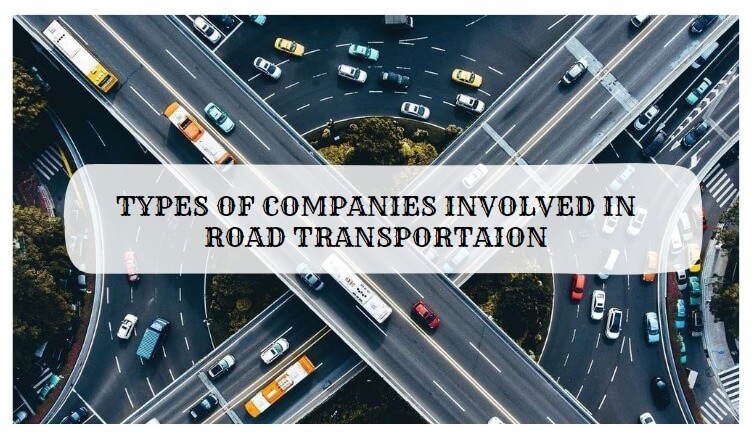
Managing truck transportation expenses is a top priority for shippers looking to optimize their logistics operations. With fluctuating fuel prices, seasonal demand spikes, and variable route rates, controlling transportation expenses can be challenging. However, with a few strategic approaches, shippers can gain a significant advantage and save on operational costs.
Here are few strategies, from shipment planning to leveraging the right transport partnerships, that shippers can implement to keep transportation expenses in check and improve profitability.
Table of Contents
Plan Your Shipment
Proper shipment planning can significantly reduce transportation expenses. Instead of mindlessly booking trucks whenever you require, thoughtful planning allows you to leverage market conditions to your advantage.
For example, truck rates are typically higher at the end of the month compared to the beginning. By planning your shipments at the beginning of the month, you can reduce transportation expenses. Even if you have your own trucks, proper planning can save money on diesel and other operational costs.
Beyond financial benefits, effective shipment planning enhances overall operational efficiency, improving delivery reliability and customer satisfaction. Companies that invest time in analyzing their shipment patterns and market trends often find themselves better equipped to adapt to the industry’s dynamic nature.
How to Plan Your Shipment?
Analyze Shipping Patterns: Examine your past shipping data to find out when you ship most frequently. Look for trends in freight rates during these times to identify the right time to book your trucks. This way, you can save money by shipping when rates are lower.
Avoid Peak Seasons: Plan shipments outside of high-demand periods like festival seasons to take advantage of lower rates and better truck availability.
Establish Contingency Plans: Possible delays due to weather or regional restrictions can drive up costs when not planned for. Having a secondary route or trusted partner who can handle such situations can prevent last-minute expenses.
Consolidate Shipments
If you’re shipping multiple times to the same destination in a month or don’t need a full truckload each time, consolidating shipments would be a great option for reducing your transportation expenses. Rather than shipping individual orders separately, consolidation allows grouping shipments for the same destination into larger trucks. A research by McKinsey & Company shows that consolidating shipments can decrease transportation expenses up to 20% while improving delivery reliability and flexibility.
For example, hiring a 32-feet single-axle truck twice from Chennai to Bangalore would cost around ₹46,000 per month (₹23,000 per trip). However, hiring one 32-feet multi-axle truck could cost just ₹28,000 for the same route, saving ₹18,000 monthly and streamlining administrative tasks. If your destination varies, consider using part-load trucks through platforms like Vahak, Delhivery, or TruckGuru.
For shippers with their own trucks, instead of making multiple smaller shipments, consolidate them into one larger shipment to maximize truck capacity and reduce costs associated with multiple trips.
How to Consolidate Shipments?
Batch Shipments Together: Combine orders that are scheduled for the same destination into a single, larger shipment.
Optimize Packaging: Use packaging solutions that minimize space without compromising product protection.
Utilize Partial Load Platforms: Use part-load or shared truckload apps like Delhivery, TruckGuru to share transportation with other shippers heading in the same direction.
Choose the Right Transport Partner
If you prefer to hire trucks as needed, choosing the right transport partner is essential for managing transportation expenses effectively. Here are three main types of transport partners to consider:
- Brokers: While they may be a quick solution, be mindful of any scam or hidden charges. Their rates usually include their commission and the transporter’s commission, which may be a heavy burden on you.
- Transporters: Working directly with transport companies often leads to more competitive pricing than brokers as they usually price without the broker’s commission.
- Online Platforms: Digital platforms like FR8 provide transparent pricing with additional benefits like real time tracking, on-time delivery and verified trucks, making them an increasingly popular choice for secure and efficient transportation.
How to Choose the Right Transport Partner?
Experience and network: Choose partners with a solid track record and a good network coverage. For instance, if you ship primarily in South India, a provider with focused coverage in that region can offer better rates and availability.
Technology Capabilities: Ensure your transport partner offers real-time tracking for goods monitoring.
Transparent Pricing and Document Verification: Look for partners who offer clear pricing and verified documents to avoid unexpected fees or fraud risks.
Negotiate Rates
In India’s dynamic trucking industry, where factors such as fuel costs, seasonal demand, and regional market fluctuations constantly affect freight rates, negotiating the best possible rates can greatly reduce transportation expenses. Instead of fixed contracts, many shippers benefit from negotiating rates based on shipment volume and frequency, allowing them to adapt quickly to market changes and secure favorable pricing.
By building strong, long-term relationships with trusted transport partners, you can also gain access to more stable and predictable rates. Carriers are often more willing to offer consistent rates to clients who provide regular business and may even provide insights into upcoming rate changes based on market trends.
A report from the Journal of Commerce indicates that companies using strategic rate negotiations saw transportation cost reductions of 10% to 20%.
How to Negotiate Rates?
Research Market Rates: Use platforms like FR8 to access up-to-date rate information and trends, so you can time your bookings and negotiations effectively.
Leverage Volume Discounts: Use your shipping volume as a negotiating tool to secure lower rates from carriers.
Establish Rate Caps: Negotiate rate caps to set an upper limit on prices, especially for lanes with high volatility, saving yourself from unexpected rate spikes.
Conclusion:
Reducing transportation expenses requires a proactive approach, focusing on planning, consolidation, selecting the right partners, and effective negotiation. By implementing these strategies, shippers can not only save on costs but also improve the reliability and efficiency of their logistics.

Yoga Laxmi
Sometimes English is just silly. That's what got me hooked on writing in the first place. Why on earth can't "grateful" be spelled "greatful"? Here's the thing, I love untangling the knots of language just as much as I love untangling the complexities of logistics. In my blog posts, I'll do both! No "greatful" mistakes here, just good info and a smooth journey through the world of shipping.






